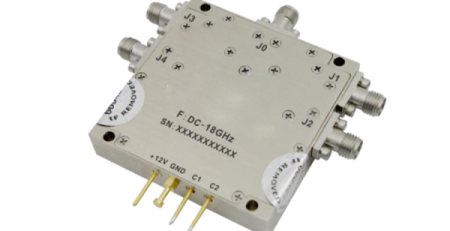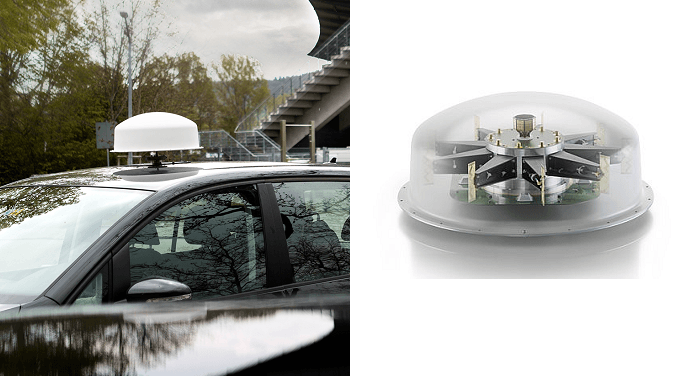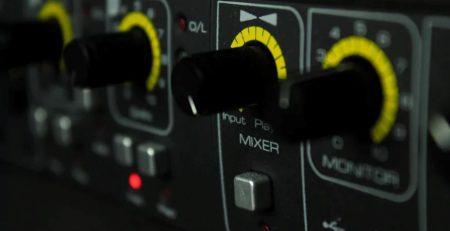Top 5 RF Power Amplifier Design Challenges and Effective Solutions

Key Challenges in RF Power Amplifier Design
Designing RF power amplifiers is tough. Below, the five biggest problems engineers face and what they mean for performance.
 1. Thermal Management and Heat Dissipation
1. Thermal Management and Heat Dissipation
High power output is a key feature of RF power amplifiers. However, it creates a problem: significant heat generation. If there is no effective thermal management, it can damage your RF system.
- Heat Buildup Problems: Amplifiers with high power levels, especially small designs, generate strong heat. This heat can degrade RF system performance.
- Results of Bad Heat Control:
- Heat can change how parts work, causing signal distortion.
- Premature component failure, reducing system lifespan.
- Reduced efficiency, as heat exacerbates power losses
Applications like 5G base stations or radar need constant high power, which are especially at risk for heat problems.
2. Achieving High Efficiency Without Compromising Linearity
Efficiency and linearity often clash in RF power amplifier design. Highly effective amplifiers (e.g., Class D) may lose linearity. Meanwhile, very highly linear amplifiers (e.g., Class AB) use more energy.
- The Efficiency-Linearity Conflict:
- Class AB amplifiers give good linearity but consume more power.
- Class D amplifiers have great efficiency but may distort signals.
- Effects on Uses:
- In 5G systems, poor linearity can degrade signal quality and lower date rates and reliability.
- Satellite communication needs both high efficiency and linearity for long-distance transmission.
Balancing these is crucial. Modern systems demand strict energy use and clear signals.
3. Impedance Matching for Optimal Performance
Impedance mismatches between the amplifier and other components can lead to poor performance.
- Problems from Impedance Mismatches:
- Reflected energy reduces output and can damage parts.
- Lower gain means weaker amplifier’s ability than needed.
- Issues in Wide-Range and Multi-Band Uses:
- Broadband amplifiers, like those in dual ridged horn antennas, must keep consistent impedance over a wide frequency range.
- Multi-band systems, such as GPS or 5G, need exact matching to avoid poor performance.
Getting impedance optimized is a constant issue, especially as frequency ranges expand.
4. Minimizing Signal Distortion and Noise
Unwanted changes in RF power amplifiers can create issues like harmonics and intermodulation distortion. These degrade signal quality.
- Sourses of Distortion and Noise:
- Nonlinear amplification creates harmonic generation.
- Intermodulation distortion happens when multiple signals interact and make new frequencies.
- Thermal noise grows with bad heat management.
- Impact on Sensitive Uses:
- In medical imaging, distortion can reduce accuracy.
- Military communication needs low noise for secure data transmission.
Reducing these issues is key to keeping signal integrity in important applications.
5. Power Supply and Stability Issues
A robust power supply is vital for RF power amplifier performance. But fluctuations can cause problems.
- Common Problems:
- Voltage ripples add noise and affect signals quality.
- Oscillations happen due to wrong load conditions or feedback loops.
- Issues with Changing Loads:
- Amplifiers in dynamic systems, like aerospace or car radar, must stay steady despite shifting power needs.
Ensuring a stable power supply design is crucial. It prevents performance drops and system failures.
Effective Solutions to Overcome RF Power Amplifier Design Challenges
Fortunately, new technology offer effective fixes for these issues. Below, we share proven solutions to improve RF power amplifier performance.
 Advanced Thermal Design Techniques
Advanced Thermal Design Techniques
Good thermal management is possible with new materials and designs:
- Heat Sinks: Effective heat sinks spread heat quickly, keeping parts safe.
- GaN Technology: Gallium Nitride (GaN) amplifiers handle heat better and work more efficiently than older designs.
- Thermal Simulations: Tools like ANSYS let engineers study heat flow. This helps improve designs before prototyping.
Using these techniques, you can reduce heat issues and make systems more reliable.
Efficiency-Linearity Balance Strategies
Finding the right mix of efficiency and clarity needs advanced methods:
- Envelope Tracking: This adjusts power voltage to match the signal envelope. It saves energy without losing linearity.
- Digital Pre-Distortion (DPD): This fixes signals nonlinearities by pre-distorting the input signal. It improves linearity in efficient amplifiers.
- Doherty Configurations: These combine amplifiers to save energy over a wide power range. They’re great for 5G.
These methods help amplifiers meet the tough needs of modern RF systems.
Precision Impedance Matching Methods
Accurate impedance matching boosts performance in many uses:
- Tunable Matching Networks: These change to keep impedance optimal across frequencies bands.
- Simulation Tools: Software like Keysight ADS helps model impedance accurately. This reduce trial-and-error in amplifier design.
These are especially helpful for wide-ranging uses, like cavity-backed spiral antennas.
Noise Reduction and Linearization Tactics
Cutting distortion and noise ensures high-quality signals:
- Feedback Loops: These keep amplifiers steady and reduce signals nonlinearities.
- Advanced Filtering: Strong filtersremove unwanted frequencies.
- Semiconductor Materials: GaN and other new materials lower thermal noise and improve linearity.
These tactics are vital for uses needing perfect signal quality.
Robust Power Supply Design
A steady power supply comes from careful design:
- Voltage regulaiton: Precise regulators keep voltage consistent.
- Decoupling Capacitors: These cut down on ripples and noise in the power supply.
- Stability Analysis: Tools like SPICE model circuit behavior under different conditions. This ensures strong performance.
These steps ensure dependable operation, even in tough settings.
Why Choose RFecho for Your RF Power Amplifier Needs?
Choosing a trusted provider is key for RF power amplifiers. RFecho is a leader in RF solutions. We have a rich history of innovation. Since starting in 2003, RFecho grew from a small team to a global leader.
RFecho’s dedication to quality shows in our modern factories and strict testing. Their power amplifiers tackle the issues we discussed. They offer great heat control, efficiency, and clarity. Using advanced materials like GaN and unique design methods, RFecho creates solutions that fit each client’s needs. Whether you’re building new telecom systems or aerospace projects, RFecho’s expertise and focus on customers make them the best choice.
FAQs About RF Power Amplifier Design
Q. What is the most critical factor in RF power amplifier design?
Thermal management is often the top concern. It affects dependability, efficiency, and signal quality. Poor heat management can cause part failures and worse performance.
Q. How do I choose the right RF power amplifier for my application?
Look at factors like frequency range, power output, efficiency, and linearity needs. For example, 5G may need Doherty configurations, while satellite systems require high linearity.
Q. Can GaN technology improve RF amplifier performance?
Yes, GaN technology greatly boosts performance. It offers better efficiency, handles heat well, and improves linearity compared to traditional materials. It’s perfect for high-power uses like 5G and radar.
Q. What causes impedance mismatch in RF amplifiers?
Impedance mismatches happen when the amplifier’s input or output impedance doesn’t match other parts. This is often due to frequency changes or poor design. Adjustable matching networks and modeling tools can fix this.
Partner with RFecho for Cutting-Edge RF Solutions
Handling the complexities of RF power amplifier design takes skill, innovation, and trusted partners. RFecho’s wide range of products and custom solutions, helps you overcome design issues. Their solutions deliver top performance. Contact RFecho today to improve your RF systems and stay ahead in the fast-moving world of wireless technology.


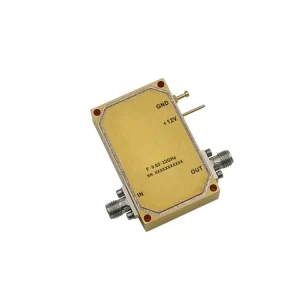 1. Thermal Management and Heat Dissipation
1. Thermal Management and Heat Dissipation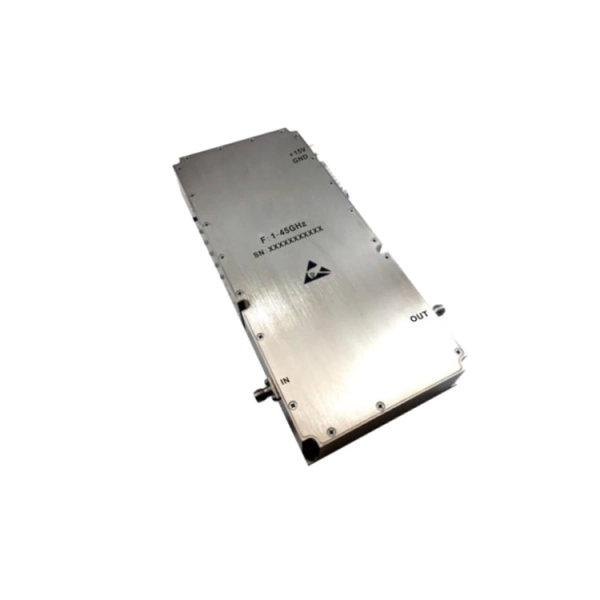 Advanced Thermal Design Techniques
Advanced Thermal Design Techniques

